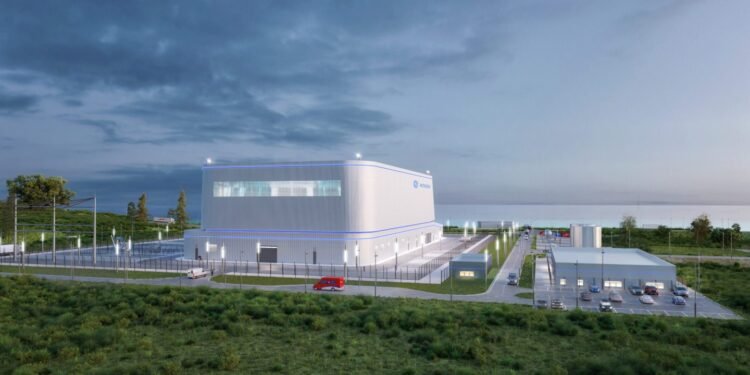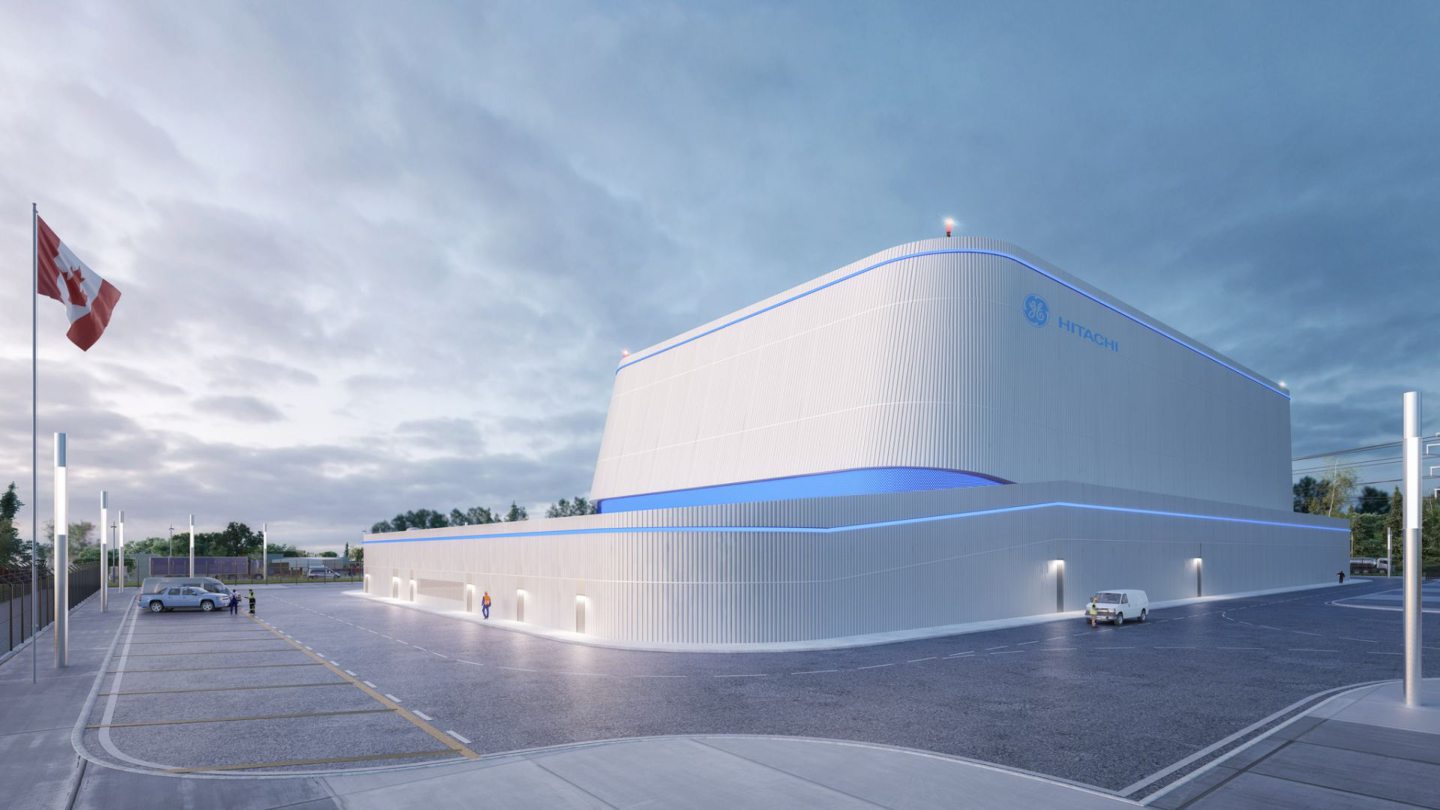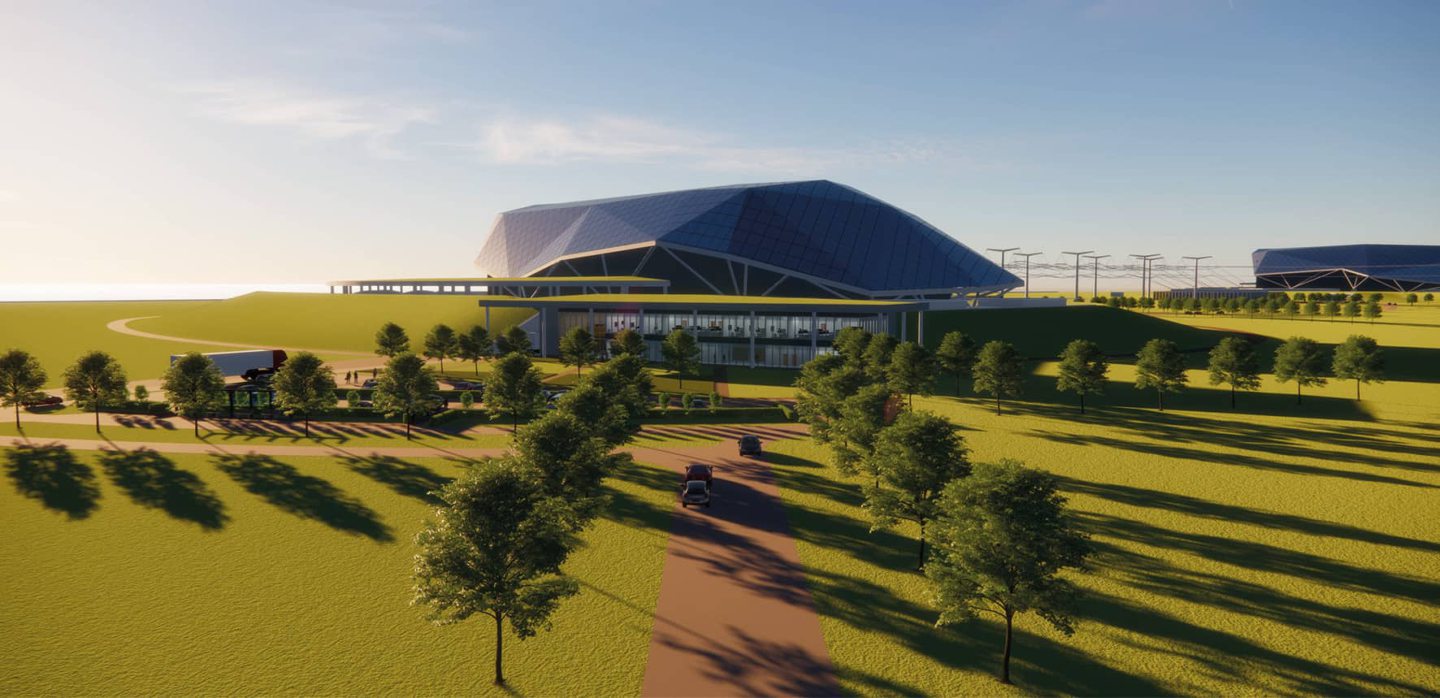GE Hitachi Nuclear Energy (GEH) has submitted its final design to the UK government’s ongoing small modular reaction (SMR) competition.
State-owned Great British Nuclear (GBN) is overseeing the SMR contest, with four companies developing reactor designs that could be operational by the mid-2030s.
SMRs are compact, factory-built versions of conventional nuclear power plants, designed to be more affordable and flexible than traditional reactors.
Compared to the Sizewell C and Hinkley Point C reactors, which each have a 3.2 GW capacity, SMRs usually range between 300 MW to as small as 20 MW capacity.
While SMR proponents argue they offer enhanced safety, scalability, and lower upfront costs, critics highlight challenges with regulatory hurdles, public acceptance, and uncertain economic viability.
GE Hitachi nuclear SMR
GEH said its BWRX-300 reactor design “builds on decades of real-world boiling water reactor operating experience and innovation”.
Announcing the firm’s final tender submission, GEH UK country leader Andy Champ said the SMR design offers a “simplified, safe, and scalable design”.
“The government has a unique opportunity to position the UK at the forefront of delivering the next generation of nuclear power and this submission marks a significant step forward in achieving this goal,” Champ said.
Meanwhile, the chief executive of GE Vernova’s power business Maví Zingoni said the SMR submission is a “milestone for the UK energy market”.
“Moving forward with two projects will help to establish an innovative new nuclear sector here in the UK, driving socio-economic growth up and down the country, creating jobs and unlocking greater opportunities to bolster the UK supply chain,” Zingoni said.
The company is already collaborating with Ontario Power Generation (OPG) in Canada to develop its first BWRX-300 reactor near Toronto.
If the plans go ahead, it would be the first SMR to be built within G7 economies.
UK nuclear SMR competition
The UK government is expected to announce the winners of its SMR competition in June as part of its spending review.
Four firms remain in the SMR contest alongside GEH, a joint venture between GE Vernova and Japan’s Hitachi Energy.
Reactor designs from Britain’s Rolls Royce and American firms Westinghouse and Holtec also made the final SMR shortlist in September last year.
While there is no fixed prize for the SMR competition, the government’s aim is to identify and support promising SMR technologies for potential future contracts.
Nuclear energy investment
It comes as part of a strategy to spur greater investment in the UK nuclear energy sector, including fusion, amid renewed interest due to the rise of power-hungry AI firms.
Rolls Royce is building a manufacturing and testing facility in Sheffield, and Holtec has also selected South Yorkshire as the preferred site for its planned £1.5bn SMR factory.
Earlier this year, Labour Prime Minister Sir Keir Starmer outlined plans to reform planning regulations to boost the rollout of SMRs.
In 2024, GBN purchased two sites in Wales and Gloucestershire for potential new nuclear development including SMRs.
Amid an expected increase in nuclear investment as part of plans to reach 24 GW of capacity by 2050 there are concerns Scotland could miss out on associated economic opportunities.
The SNP-led Scottish government opposes new nuclear development in Scotland, but the Conservative and Labour parties both back a reversal of the ban.



 © Supplied by GE Hitachi Nuclear E
© Supplied by GE Hitachi Nuclear E © Image: Rolls Royce SMR
© Image: Rolls Royce SMR






